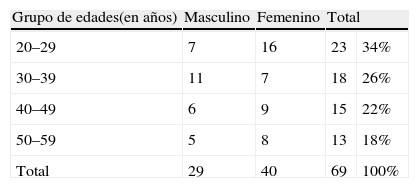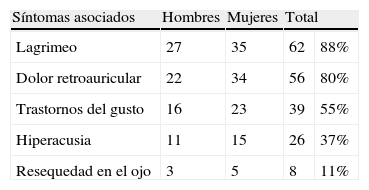Las diferencias de criterios en cuanto a la utilización de agentes físicos en la parálisis facial periférica ha fomentado la realización de diversas investigaciones que permiten proponer nuevas alternativas de tratamiento, como son el uso de nuevos agentes físicos que han probado su eficacia en otras patologías con similitud de fisiopatogenia. Los tratamientos actuales buscan acelerar la mejoría y aumentar el porcentaje de personas recuperadas.
ObjetivosEvaluar la efectividad que tendría el tratamiento con campo magnético y láser en pacientes con parálisis facial periférica idiopática con menos de una semana de evolución, desde la instalación de los síntomas, sin tratamiento fisioterapéutico previo.
MétodosSe realizó un estudio prospectivo, experimental, aleatorizado y controlado a simple ciego en el Servicio de Terapia Física y Rehabilitación del Instituto de Neurología y Neurocirugía (INN) en La Habana, en un periodo comprendido entre enero de 2009 y enero de 2011.
ResultadosLos pacientes fueron evaluados al inicio, al mes y a los 3 meses del tratamiento, después de lo cual se comprobó una recuperación más rápida en el grupo experimental con respecto al grupo control, al mes (p=0,004075) y (Z=2,87232) y a los 3 meses (p=0,007859) y (Z=2,65810).
ConclusionesLos pacientes que recibieron la terapia combinada de campo magnético, láser, masaje y ejercicios tuvieron una recuperación más rápida respecto al grupo que solo recibió masaje y ejercicio, lo cual corrobora que la terapia propuesta es efectiva en los pacientes con parálisis facial periférica idiopática.
The different criteria regarding the use of physical agents in peripheral facial paralysis has fostered the performance of various investigations that make it possible to propose new treatment alternatives, such as the use of new physical agents that have proven effective in other conditions with similarity to pathogenesis. Current treatments are aimed at accelerating improvement and increasing the number of people who recovered.
ObjectivesTo evaluate the effectiveness that the low frequency electromagnetic field and low level laser therapy would have in patients with idiopathic peripheral facial paralysis with less than one week's evolution from the initiation of the symptoms, without previous physiotherapy.
MethodsA prospective, experimental, randomized, controlled single blind study was conducted in the Department of Physiotherapy and Rehabilitation, Institute of Neurology and Neurosurgery (INN) in Havana, in a period between January 2009 and January 2011.
ResultsPatients were evaluated at baseline, one month and three months of treatment, after which faster recovery was verified in the experimental group compared to the control group at one month (P=.004075) and (Z=2.87232) and at three months (P=.007859) and (Z=2.65810).
ConclusionsThe patients who received combined therapy, magnetic field, laser, massage and exercise had a faster recovery than the group that received massage and exercise alone. This collaborates that the proposed therapy is effective in patients with idiopathic peripheral facial paralysis.
Artículo
Si ya tiene sus datos de acceso, clique aquí.
Si olvidó su clave de acceso puede recuperarla clicando aquí y seleccionando la opción "He olvidado mi contraseña".Comprando el artículo el PDF del mismo podrá ser descargado
Precio 19,34 €
Comprar ahora











